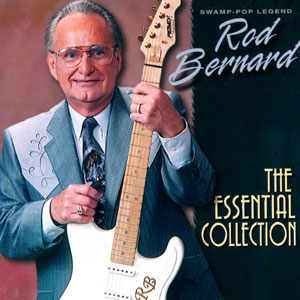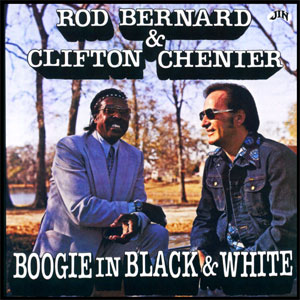A brief history…
Born in 1940, this Opelousas, LA native learned to play the guitar at age eight and had his first radio program on KSLO in Opelousas, Louisiana between the ages of 10 to 12. Rod Bernard’s first band, “The Twisters” played for local functions. His 1958 recording “This Should Go on Forever” was in the Top 10 and Top 20 charts nationwide. Rod appeared on Dick Clark’s “American Bandstand” twice and performed with numerous other musicians such as Jerry Lee Lewis, Freddie Fender, B.B. King, Kenny Rogers, Jimmy Clanton, Johnnie and Edgar Winter, Mickey Gilley, Dr. John, Brenda Lee and Brook Benton. His hit records included “Colinda,” “Sometimes,” “One More Chance,” Forgive” and “Congratulations to You Darling.” Rod is generally considered one of the foremost musicians of this south Louisiana-east Texas idiom, along with such notables as Bobby Charles, Johnnie Allan, Tommy McLain, and Warren Storm. He is a member of the Louisiana Hall of Fame.
Reviews…
The Advertiser (September 2014)
BOOGIE IN BLACK & WHITE
An album titled “Boogie in Black & White” barely raises an eyebrow today in south Louisiana.
But the story was much different story in 1976. Elementary and high schools in the state had just been reluctantly integrated six years earlier.
Yet white singer Rod Bernard had a dream. Bernard was already known throughout the area as a TV celebrity and swamp pop singer. He had even hit the Billboard Top 20 and performed on national TV with his 1959 hit, “This Should Go On Forever.”
But Bernard longed to record with a black musician who shared his same hometown of Opelousas — Clifton Chenier.
“This recording is the final result of an idea I’ve had for many years: to record an album with the ‘Zydeco King,’ Clifton Chenier!,” Bernard wrote in 1976. “You see, I was raised on boogie and blues. My all-time favorites are Fats Domino, B. B. King, Chuck Berry, Jimmy Reed, and, of course …Clifton Chenier.”
Bernard’s words, and the landmark album that carried them, have returned almost 40 years later. Jin Records of Ville Platte has re-released “Boogie in Black & White” on CD.
The disc contains the same 10 songs from the original recording, along with new, more extensive liner notes written by Rod’s son, historian Shane Bernard of New Iberia.
In the late 1970s, “Boogie” became a hit for its hard-driving, accordion-flavored version of R&B and blues classics. It featured a racially-integrated band with some of the region’s most popular musicians.
Chenier, who was already touring internationally with his Red Hot Louisiana Band, brought in two bandmates, his brother Cleveland on rubboard and saxophone ace John Hart. Singer and drummer Warren Storm, known for his 1958 national hit, “Prisoner’s Song,” provided the beat. Glenn Himel (piano), James Stelly (guitar) and Joe Hill (bass) rounded out the ensemble.
“The idea was simple,” wrote Bernard in the notes. “Pick ten ‘boogie’ songs, add Clifton’s unique accordion sound, throw in Cleveland’s scrubboard, let Warren set the beat and try to sing like hell!”
The musicians gathered at Floyd Soileau’s Jin Studio in Ville Platte and ripped through “Kansas City, “Shake Rattle & Roll,” “True Fine Mama” and other early R&B and rock ‘n’ roll nuggets. In an interview, Soileau said reaction was strong at home and away.
“That was the album we had the best sales in the east Texas area,” said Soileau. “I guess because Clifton was so popular in east Texas and the Houston area. We probably sold more there than in Louisiana.
“We must have had some stations over there playing it that I didn’t know about and it created some demand. They liked those R&B hits with that zydeco style. It was just the right time and the right place. It turned out to be a great success.”
Praise came from as far as England. British music writer Bill Millar called the record “a wild and wooly rock ‘n’ roll set with spontaneity one normally only dreams about.” Baltimore music writer Larry Benicewicz suggested the album planted the seed for Wayne Toups’ “zydecajun” style and Zachary Richard’s 1984 “Zack Attack” album.
Soileau is thrilled to see “Boogie” back for a new generation to enjoy.
“It was always in the back of my mind that we needed to do a digital version of that. I kept telling my son Chris and he said, ‘We got it on the list.’
“There was always something pushing back and I said ‘It’s past time. I want to see this in digital form before you put me six feet under.’
“I hope the folks will get a hard copy that they can show and present to the younger generation as a remembrance of this music. It was so hot back then. We have to pass that on to future generations.”
by Herman Fuselier
Related links…


